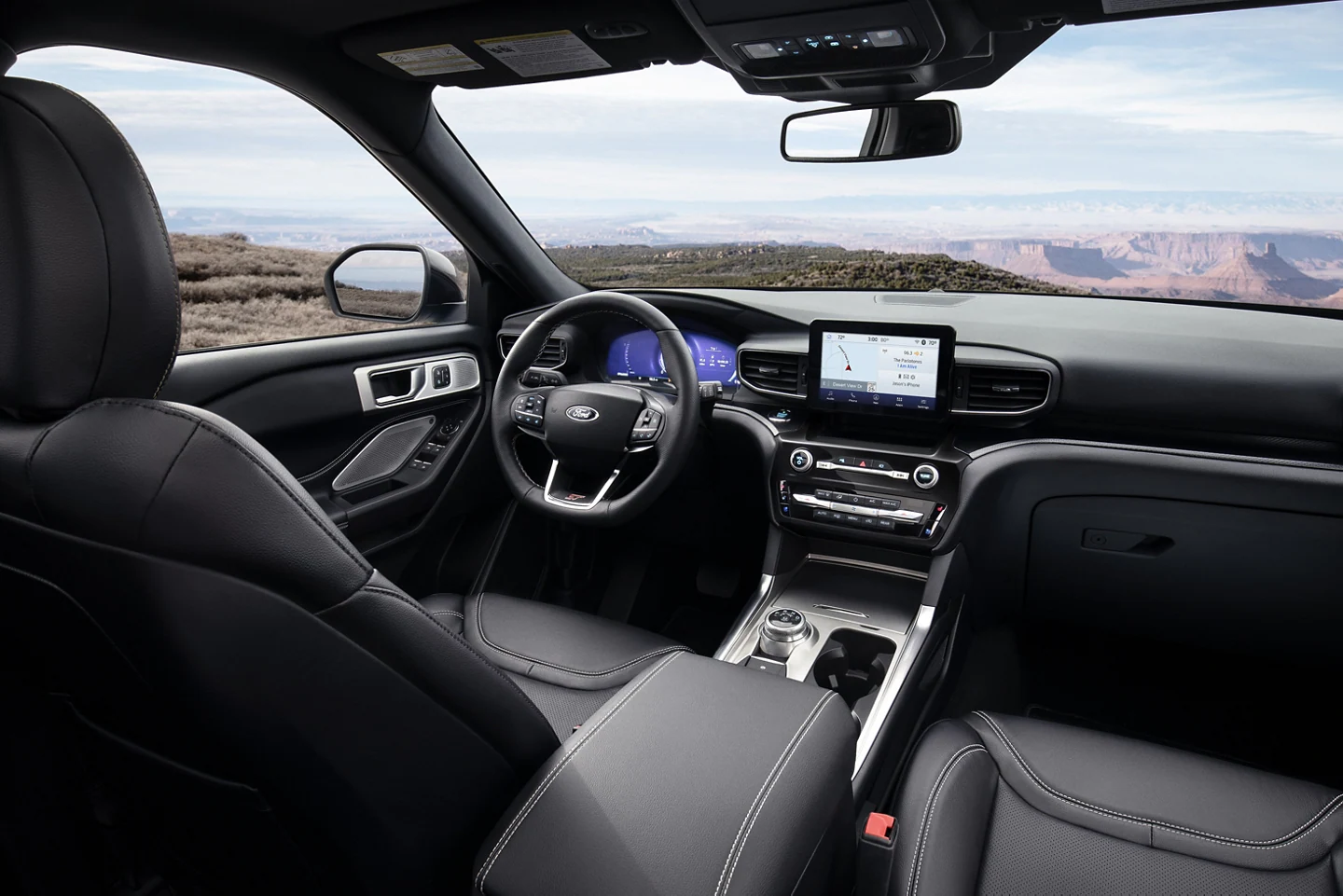The 2023 Ford Explorer and the 2023 Toyota Highlander are two popular competitors in the midsize SUV class. Since both SUVs offer great features, let’s analyze their design, performance, safety, and technology to help you make the best decision.
Key Takeaways
- The Explorer comes with a sporty design while the Highlander comes with a conservative design.
- The Explorer offers more legroom and comfort while the Highlander offers a nice but practical interior.
- The Explorer offers more powertrain options than the Highlander.
- Both SUVs offer impressive safety and technology features.
- Both SUVs have a starting price of about $38,000.
Exterior
The Explorer gives off an athletic look that features a sporty grille, LED headlights, and sharp body lines. To compete with other midsize SUVs, Ford has come up with improved trim levels for the Explorer, such as the Explorer Timberline, to add a sense of confidence, adventure, and ruggedness to its design.
The Highlander offers a more conservative, sleek appearance with a refined front grille. You can pick from 8 colors that go well with the 18-inch alloy wheels and LED headlights.
Both vehicles have a commanding presence, but the Explorer's sportier aesthetic may appeal to those seeking a more adventurous look while the Highlander may appeal to those seeking a conservative look.
Interior

Inside the Explorer, you'll find a cabin that offers generous legroom in the front (43 inches) and second (39 inches) rows. However, the third row can be a bit compact with only 32.2 inches of legroom. The Explorer comes with an 8.0-inch touchscreen, Apple CarPlay, Android Auto, voice-command navigation, rear-seat entertainment system, and a 12-speaker B&O system. A bigger touchscreen (10.1 inches) and other features are available for more expensive trims of the Explorer.
The Highlander also offers a cabin with comfortable seating for up to eight passengers. More expensive trims come with captain’s chairs, but the Highlander comes with slightly less room than the Explorer. The legroom is 40.4 inches in the front, 41.0 inches in the second row, and 27.7 inches in the third row. The Highlander comes with a standard 8-inch touchscreen, but higher trim levels can come with a 12.3-inch touchscreen. All trim levels come with satellite radio, Apple CarPlay, Android Auto, Amazon Alexa, Wi-Fi hotspot, and a wireless charging pad. Even with these features, the Highlander falls slightly short in terms of legroom and comfort compared to the Explorer.
Performance and Capacity
The Explorer offers three different powertrain options. The base engine is a turbocharged 2.3-liter four-cylinder that produces 300 horsepower and 310 lb-ft of torque. The Base, XLT, ST-Line, Timberline, and Limited trims come with this base engine. For those seeking more power, the second powertrain option is a 3.3-liter V6 hybrid that produces 318 horsepower and 322 lb-ft of torque. The Limited Hybrid and Platinum Hybrid trims come with this second powertrain option. The last powertrain option is a twin-turbocharged 3.0-liter V6 engine that produces 365 horsepower and 380 lb-ft of torque comes with the Platinum trim. However, the ST trim produces 400 horsepower and 415 lb-ft of torque. With these three options, you are sure to find the right performance that matches preference.
The Highlander comes standard with a turbocharged 2.4-liter four-cylinder engine that generates 265 horsepower and 309 lb-ft of torque. However, if you want a hybrid version, the Highlander features a 2.5-liter four-cylinder engine combined with two electric motors for an improved fuel economy of about 36 MPG. While both vehicles offer capable powertrains, the Explorer's wider engine options and higher horsepower make it the winner in terms of performance adaptability.
Safety
Both the Explorer and Highlander prioritize safety by being equipped with advanced driver-assistance systems. Receiving five-star reviews from the National Highway Traffic Safety Administration (NHTSA), both SUVs come with standard safety features such as automatic emergency braking, blind-spot monitoring, and lane-keeping assist. However, Ford's Co-Pilot360 system provides enhanced safety and convenience features.
The Toyota Highlander comes with Toyota Safety Sense 2.5+, a suite of safety technologies that includes pre-collision detection, adaptive cruise control, and lane departure alert. It also offers an available surround-view camera system and a rear-seat reminder. While the Highlander's safety features are commendable, the Explorer's Co-Pilot360 system provides a wider range of advanced safety technologies.
Pricing
The Explorer’s starting price is about $38,000 with an MSRP range of about $37,000 – $56,000. The Highlander’s starting price is about $38,000 with an MSRP range of about $36,000 – $51,000. Though both SUVs have the same starting price, the Explorer is slightly more expensive than the Highlander. However, you would get more features with the higher price of the Explorer than you would with the Highlander.
Overview
Both the Explorer and the Highlander are solid choices for a midsize SUV. The Explorer stands out with its sporty design and wider range of powertrain options. Comparatively, the Highlander focuses on reliability and reputation of long-lasting value. The choice between which vehicle is right for you will come down to your personal preferences, budget, and your sense for adventure.